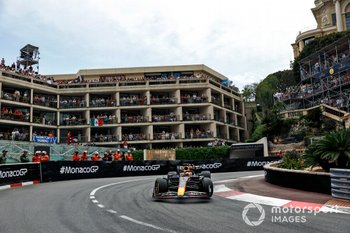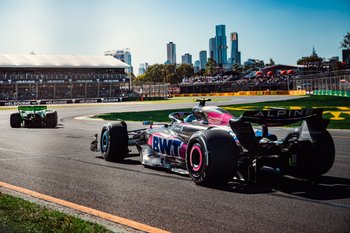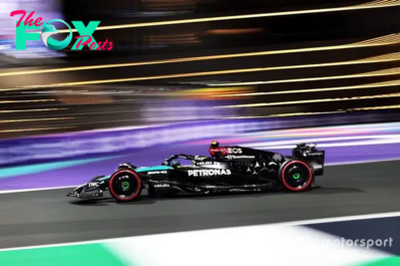F1 News
Interview: Newey’s vision on what F1 should be
Throughout his career we have seen plenty of ideas for his ultimate F1 machine – which famously included his Red Bull X2010 created for Gran Turismo. It was a 1400bhp fan car that smashed the track record at Suzuka by 20 seconds during simulator runs.
But delivering the perfect F1 car is not just about having the ultimate cars, because a grid full of X2010s would probably not deliver brilliant racing that fans desire.
Instead, creating a successful F1 requires overcoming a ton of coNFLicting demands to hit targets that come together to create something that is truly exciting.
So at a time that F1 is debating whether or not the current rules era has delivered all that was hoped for, and there is intrigue about what we can expect from 2026, it seemed a perfect moment to sit down with Newey and download his thoughts on what F1 should be.
Speaking exclusively to Motorsport.com, Newey offered a fascinating and pragmatic insight into the direction he felt F1 should go, as there were plenty of aspects in the changing world around us that means the head has to rule the heart these days.
“It’s where all the conundrums come in,” said Newey. “I think most people would say, from a spectacle point of view, you probably want a high-revving V10, normally aspirated. We all kind of pine after the V10s and even the V8s of the 2000s.
“But of course they are not fuel efficient. So, then you have to have the balance of spectacle versus social responsibility, even though the fuel consumption of the cars in terms of the pollution that is caused by the sport is, in reality, tiny.
“The biggest contributor by far has to be people attending the races. And in that sense, it's no different to football or any other international sport. But it's the image and the popularisation. So, I think that's your first conundrum: the power source. Do you go for efficiency, which is typically relatively quiet, because noise is actually inefficiency?
“And then on the chassis side, to me it's small and light. The cars have got very big. Those are the fundamentals.
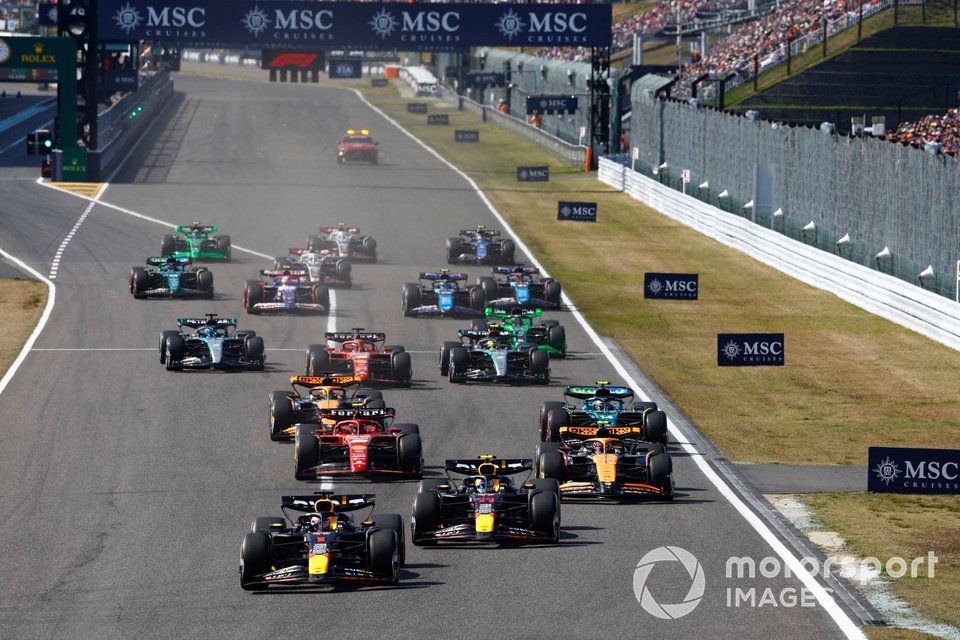
Max Verstappen, Red Bull Racing RB20 Sergio Perez, Red Bull Racing RB20, Lando Norris, McLaren MCL38, the rest of the field away
Photo by: Sam Bloxham / Motorsport Images
“You can then start to debate how quick the car should be, in terms of lap time in high-speed performance, but the thing you have to remember is television invariably has the appearance of slowing cars down.
“Watching a moderate performance car is not very exciting. Cars need to be properly quick to even begin to come across as looking quick on TV.”
Newey’s talk about the conundrums of a future F1 series goes to the heart of a coNFLict that sits right at the heart of motor racing.
Grand prix racing’s regulators and promoters want rules that deliver thrills, while it is the job of teams to produce cars that, in a perfect world, deliver to their best and roll out boring 1-2s. Producing an entertaining victory does not bring any more points.
These two forces that ultimately work against each other are something that Newey believes can never be fully resolved.
“Unless you make it artificial, which then starts to become like WWF, then I'm not sure you can,” said Newey.
“The reality is that the regulations we currently have are arguably the most restrictive ones we've ever had. Each new set of regulations tend to be more restrictive than the previous ones, and the cost cap has also been introduced to restrict the spending of the largest teams versus the smallest teams.
“And yet, the competitive order under the cost cap hasn't changed significantly.”
Having teams and the regulators chasing competing goals does not mean guaranteed failure though, because within their remit are the shared ingredients that can produce great races.
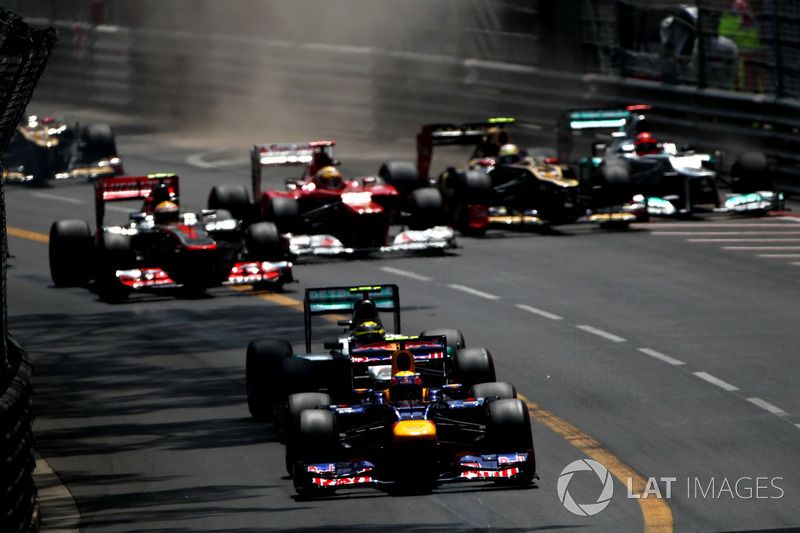
Mark Webber, Red Bull Racing RB8, leads Nico Rosberg, Mercedes F1 W03, Lewis Hamilton, McLaren MP4-27, and Fernando Alonso, Ferrari F2012, as Romain Grosjean, Lotus E20 and Michael Schumacher, Mercedes F1 W03, make contact
Photo by: Andrew Hone / Motorsport Images
Remembering the good times
There is also the important consideration that F1 will always struggle to live up to what we recall the past to be: which is of memorable highlights of the iconic moments with the dull races having been wiped from the memory banks.
“We have a habit of remembering the memorable races, the memorable battles and kind of push these to the rose-tinted glasses,” added Newey. “Then we forget the ones that are a bit dull.
“The reality is there's been lots of dull races over the years, including every given season. And perhaps the most dramatic season, I guess, was 2012 when there were six different winners in the first six races.
“I think the beauty of F1 is that it's man and machine. Within the machine, you have the chassis and the engine. So, you have effectively three key inputs to a thoroughly competitive package.
“You don't necessarily need all three of those to be the best on the grid but probably if two are the best and the third is good, then you'll be in a reasonable position.
“That is the danger of over regulating, that if the cars became so over regulated, and it became effectively one-make formula racing, then History dictates that whenever a racing series has become one make, it invariably becomes less popular.
“The best or worst example, whichever way you want to look at it, is IndyCar in the mid-90s. You had, I think, four or five different chassis manufacturers, three or four different engine manufacturers, and its popularity was starting to rival F1 at the time.
“Shortly after that it became a one-make series, certainly on the chassis, and two-make on the engine side. And its popularity in truth has dipped.”
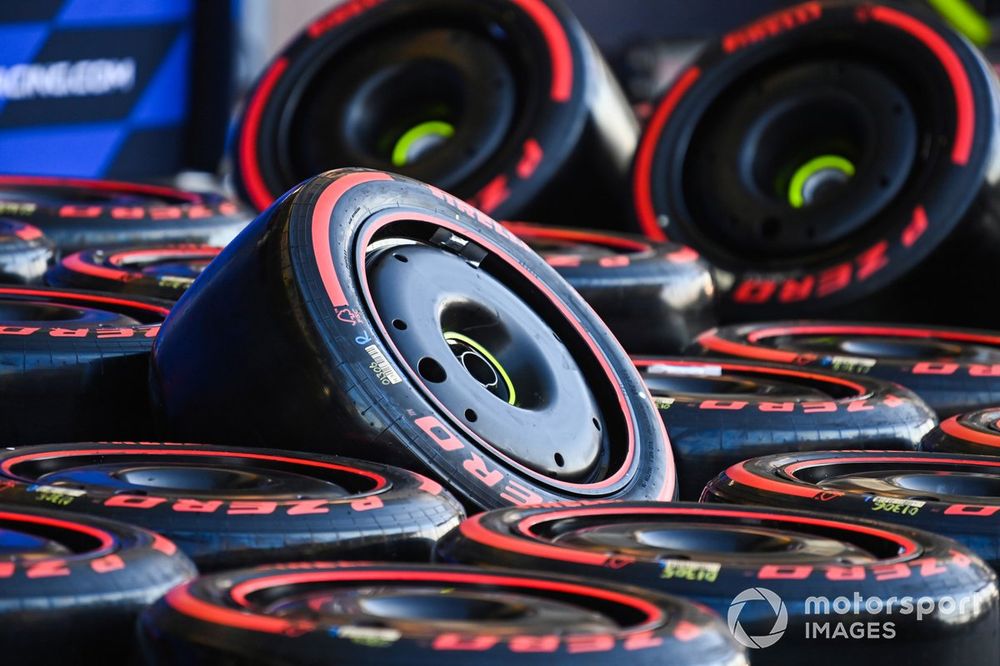
Pirelli tyres in the paddock
Photo by: Mark Sutton / Motorsport Images
The role of tyres
A successful F1 is not just about getting the cars right though, for Newey sees something equally as important: the impact of tyres.
However much teams and drivers moan about F1 being in a tyre degradation era where they cannot push to the maximum every lap, Newey thinks the balance right now is quite good.
“I think tyre degradation tends to get a bit of a bad name,” he said. “But personally, I think it's actually a good thing. It gives rise to different strategies, including if you're behind throwing the balls up in the air, and having a go: like we did at the Texas [Austin] race last year.
“If at that Texas race the tyre degradation wasn't significant, we would have had no chance of helping Max [Verstappen] win that race. And that's probably one of the more exciting races of the year as it turned out.
“So, I think tyre deg is actually about right as we have it. It means without repeating itself, we can have different strategies and that different cars perform differently at different moments through the race.
“It kind of gives a bit of variety and, in variety, unpredictability that might otherwise be lacking. Typically, the races where the tyre deg is less of a problem, and the grid ends up one-stopping, they tend to be the slightly more boring races.”
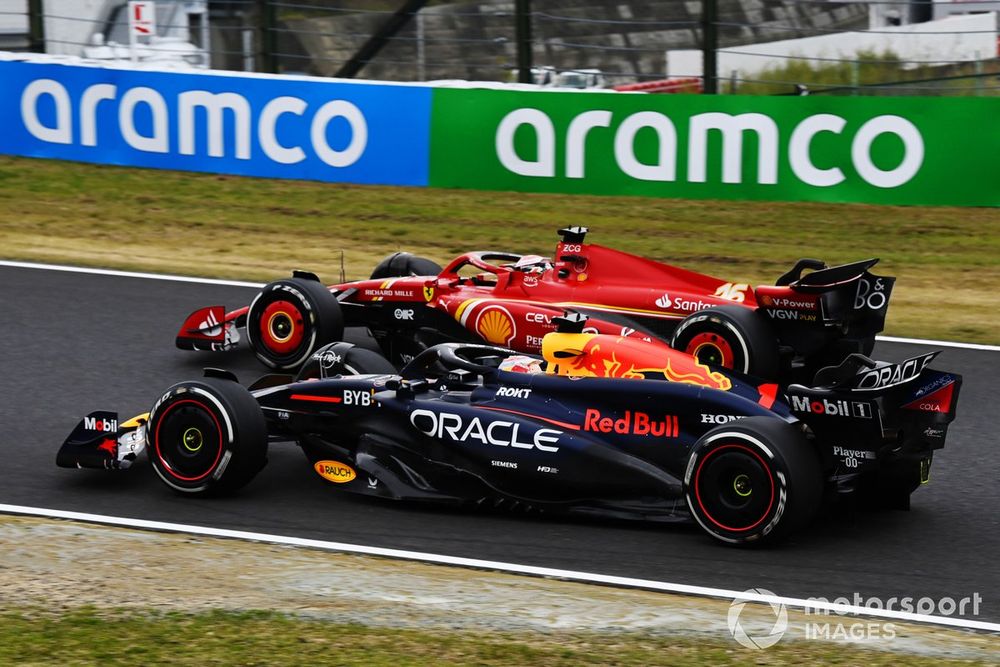
Charles Leclerc, Ferrari SF-24, alongside Max Verstappen, Red Bull Racing RB20
Photo by: Mark Sutton / Motorsport Images
Car size is key
Amid recent talk within F1 circles of the problem of dirty air returning, despite all the efforts made with the 2022 rules, Newey returns to his original viewpoint: that the size of the cars is critical.
“On the aero side of it, the racing certainly in 2022 especially, the cars were following very closely, and even now they still follow closely,” he said.
“But the cars have perhaps got really big. They are fast and they are heavy, and I think that's a bit of a shame. Because one thing you can say over the years is that whatever F1 cars represent, tends to be popularised in the showroom.
“The paddle shift gear change obviously came in in F1. And that's become very popular in road cars now.
“When turbocharged cars were first introduced to F1 back in the 80s, you then tended to see more turbocharged road cars.
“Look at carbon fibre wings - most Sports cars you see on the motorway now, they have some sort of wing that pops up and down. So, it does popularise things.
“Certainly there's a lot of talk at the moment, quite rightly, about ecology and how to reduce the effects on the planet of automotive. What tends to go with that is mainly an obsession with reducing emissions perhaps through battery or hydrogen, not using fossil fuel.
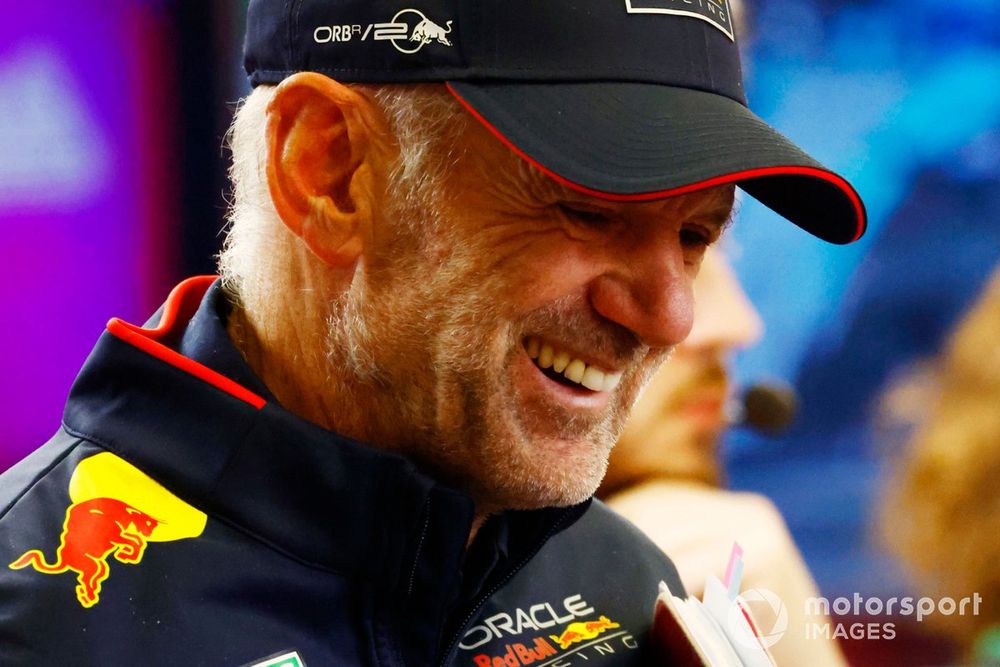
Adrian Newey, Chief Technology Officer, Red Bull Racing
Photo by: Sam Bloxham / Motorsport Images
“But the much bigger thing to me is actually the amount of energy the car uses. Because that's the key thing: if it's using huge amounts of energy, it doesn't matter where the source is coming from, that energy has to come from somewhere, even if it's coming from a wind turbine, that's by no means zero carbon emissions.
“So, the chance for F1 to go the opposite route, and go to much smaller, lighter, more aerodynamically efficient cars, I think that is the one that I would certainly advocate.
“Maybe that would then start to turn the tide away from these three-ton monsters that are wrecking our roads and collapsing pot holes.”
Watch: The 2025 F1 Calendar – Does it Make Sense?
-
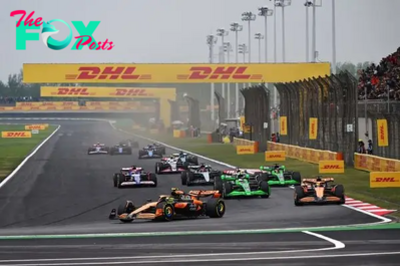
 F1 News14h ago
F1 News14h agoF1 teams downplay risks of ‘sprint cars’ with new parc ferme rules
-
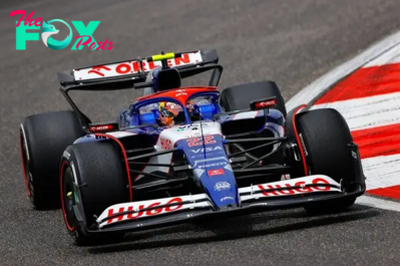
 F1 News20h ago
F1 News20h agoRB plans Miami upgrade to keep "surfing on the top" of midfield fight
-

 F1 News1d ago
F1 News1d agoNorris: F1 might never have a driver with Alonso's longevity again
-
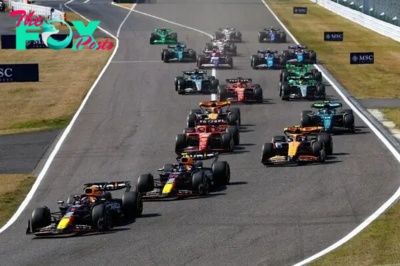
 F1 News1d ago
F1 News1d agoThe changes that resulted from F1’s evolution into a truly global player
-
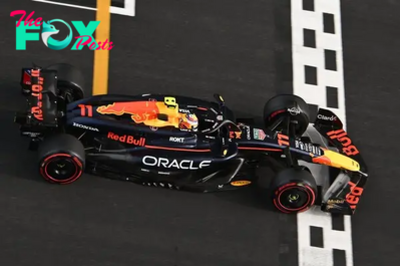
 F1 News1d ago
F1 News1d agoRed Bull being as "ballsy" with F1 engine as it is with title-winning cars
-

 F1 News1d ago
F1 News1d agoHow studying Tost, Whiting and Binotto shaped F1's latest team boss
-

 F1 News1d ago
F1 News1d agoF1 chief Domenicali eyes more sprint weekends
-

 F1 News2d ago
F1 News2d ago12 years late: How Hulkenberg is finally getting his shot at a ‘big’ F1 team
